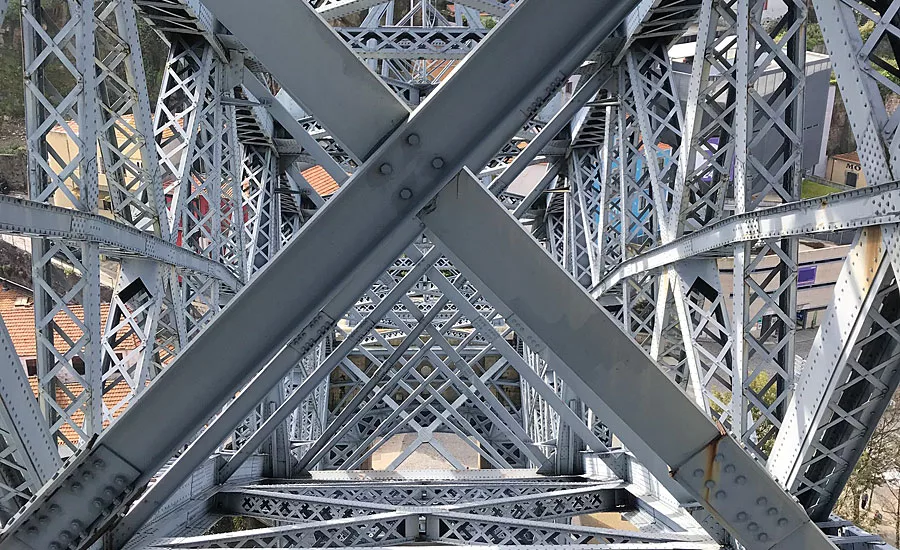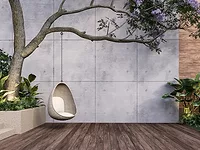The Luís I Bridge: Reaching High Durability with a Zinc-Free System



The double-decker Luís I Bridge spans the River Douro between the cities of Porto and Vila Nova de Gaia in northern Portugal. The bridge – completed in 1886 and built next to an adjacent bridge it replaced – consists of complex ironworks with a great arch and spans 172 meters (564ft) and a height of 44.6 meters (146ft). The two levels had been designed to carry road traffic up to 2003, but today is used to carry the Porto Metro light rail on the upper level and a pedestrian walkway and road traffic beneath.
In 2003-2004 the bridge underwent a major refurbishment, including steel re-inforcement to allow the installation of the light rail on its upper deck. During this work, the steel bridge was fully blasted to bare metal and coated with a zinc-free coating system consisting of two coats of epoxy and one coat of polyurethane finish, with a total of 290 microns dry film thickness. Sherwin-Williams’ Dura-Plate 301 ultra-tolerant epoxy technology was used.
Challenge
As part of the new Metropolitan rail network – the Porto-Gaia crossing – more than 30,000 square meters of original steelwork and an additional 22,000 square metres of new steel required protection against corrosion from the aggressive marine environment.
Part of the challenge was the removal of high volumes of lead-based paint, with deep thickness of maintenance paint applied over a century, while working over a World Heritage Site with high humidity weather constraints.
To remove the lead-based paint, traditional abrasive blasting would present acute effects of dangerous waste for those working on it and environmental issues including the problem of removal of the waste with expensive transport and management costs as a dangerous substance.
Solution
The chosen strategy for the removal of the paint and preparation was an alternative method using Ultra High Pressure (UHP) water-jetting in conjunction with an innovative water-recycling system that enabled the water to be recycled back into the river as clean water.
The water re-cycling system was based on a combination of mechanical separation through decantation and filtration and a special biological filter to absorb any remaining contaminants.
For the coating system itself, the ultra-tolerant Dura-Plate 301 epoxy coating system was chosen for its exceptional durability over water jetted surfaces, due to its tolerance to damp, flash rusted or low roughness steel surfaces.
Result
With little maintenance needed during this time, the bridge is in excellent condition. A recent inspection in 2018 found over 97 per cent of the steel surfaces completely free of corrosion, with up to three per cent of specific areas showing traces of corrosion not surpassing Ri3 (<1%) according to ISO 4629-3.
This means less than 0.03% of visible steel surface showing rust, overall. With spot repair in routine maintenance, the Luís I Bridge will be protected for many years to come before needing a full refurbishment again. Now about to surpass the high durability mark (>15 years according to ISO 12944:2018), the expectation is that the Dura-Plate 301 system will deliver a very high durability (>25 years) performance with a maintenance plan in place.
By Sherwin-Williams Protective and Marine Coatings
Looking for a reprint of this article?
From high-res PDFs to custom plaques, order your copy today!





